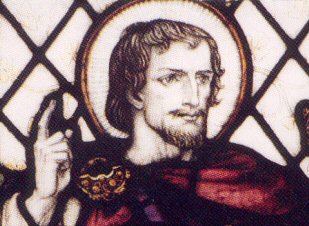St Patrick was born a Roman-Briton and lived his early life near Bannaven Tabernia – which may have been in what today we call Wales, or Scotland or England. His name was Maewyn Succat but he took Patricius upon becoming a priest – a name signifying leader or elder of Roman society. He was the son of a civil servant and grandson of a Christian priest.
At age sixteen he was kidnapped by Irish raiders and sold into slavery in Ireland. He tended herds night and day on Slemish mountain. There he gave himself to constant prayer and experienced a spiritual awakening.
He escaped back to Britain. One night in a dream, a man called Victor came to him with letters. One entitled ‘The Voice of the Irish’ begged, ‘We ask you, boy, come and walk once more with us.’ He first became a priest, then a bishop: then he returned to Ireland. Patrick began his mission in 432 A.D. on the shores of Strangford Lough where Dichu became his first convert.
In the space of thirty years, he managed to convert much of the country and gathered a band of saintly followers who saw through his work after his demise in 461. These are the bare facts. Whether or not you choose to believe that he used the shamrock – ever since symbol of Ireland – to illustrate the Trinity, is a personal decision. It remains a potent symbol of Irish Christianity. Most of Europe later benefited from the teachings of followers of Patrick and the New World too recognises its debt.
Go out and enjoy yourself and celebrate the debt we owe to our Patron Saint. Don’t overdo it. Be respectful of others, especially to visitors to our shores. Remember, Patrick was one too!
… O’Hanlons of South Armagh …
